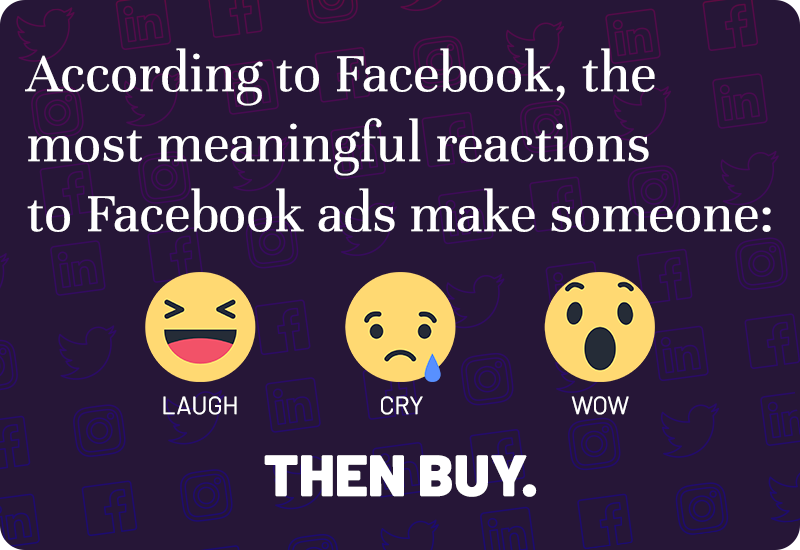6 questions to ask in your social media creative brief

Brands continue to compete for finite consumer attention on social media. There’s a projected 20% increase in social ad spending, up to nearly $43 billion in 2021 alone. The competition and massive budgets reflect the fact that brands are using social media like never before as a way to connect with customers and prospects in a simple, human way as we all spend more time at home glued to our screens.
Whether your social media campaign is part of a limited post series or a larger ad campaign, to excel at social media marketing you need to start with a creative brief. Including these six questions in your creative brief will set your social media campaign up for success.
1. What is the desired audience reaction to social in this campaign?
Concentrating first on the reaction you’re looking to evoke—rather than the transaction—leads to focused creative that tells a good story and makes an impact. Try to choose one objective focused on audience reaction in your creative brief, e.g., surprise and delight current customers with new product designs, before producing assets. In this way you’ll set the right tone and energy for a campaign.
“Social is different—it’s a public venue in which we’re talking WITH a consumer, not AT a consumer, and our approach needs to reflect those differences. Social gives consumers a platform to respond and one in which the consumer expects to be heard.”
—Jackie Kolber, BMO Harris Bank social media manager

2. Why would this topic start a conversation?
When completing a creative brief, envision how the topics of your social marketing campaigns will get people talking, and how these topics are already being introduced in casual conversation.
If you’re selling insurance, recognize why people talk about insurance with their friends and family: It could be a pleasant discovery of unexpected coverage, such as learning that items stolen from your car are covered by renters insurance. Then, use those observations to create social concepts that can seamlessly fit into everyday conversation.
Tip: Embrace the power of the community. Some of the most successful moments in social media have occurred when a brand has been successful in harnessing the power of its social community to amplify the impact of its social media efforts. A positive social media experience has proven to have a positive impact on perceptions and usage of a brand. (A big part of that equation is a strong community manager, whose job it is to represent the brand in those contexts.)
3. What other campaigns will be active at or near the same time?
A consumer’s social feed is unique and undeniably personal (thanks to The Algorithm). So bombarding consumers with too many competing social marketing campaigns and messages at once can be a turnoff and even feel invasive. Or worse, they may not even get the chance to see it in a cluttered feed.
When completing a creative brief, take into account your brand’s other campaigns that will be live before, during and after the one you’re producing. Also take into consideration the time of year and other messages being pushed to your target audience. (A few days before a major holiday may not be the best time to launch your social campaign—or it may be!). By considering these other factors, you’ll avoid oversaturating your audience with communications. A holistic perspective will help you think more strategically.
4. Which social channels are best for the campaign?
During the creative brief process, imagine how differing social media channels will affect your campaign. They aren’t one-size-fits-all, and you shouldn’t approach them that way. LinkedIn and Instagram, for example, reach different audiences in different ways. By starting with an evaluation of which platforms will serve you best, you’ll end up with creative that’s on track and feels at home in its environment.
Tip: Don’t copy and paste the same social captions to all of your platforms. Instead, tailor your message to each channel. On Twitter, keep it short and sweet with relevant hashtags. On Instagram, get creative with emojis and make sure to tag the right partners.
5. Can you incorporate video?
Consider the importance of video. The explosion of SnapChat and TikTok have unleashed the abilities of masses of people to create fun, informative and emotional short videos. Brands such as Washington Post have been successful in raising their profile with a younger audience by using TikTok to show empathy while still being informative. Video content receives 49% higher interactions than still images on social media. So if you can incorporate video into your campaign, you are almost guaranteeing a better campaign ROI.
6. How will you measure social campaign success?
Arguably the most important question in a brief centers around how you will measure success. If you do all of this hard work in planning and executing a campaign, you need to have some desired outcomes set upfront to determine what went well and what you can improve on in the future.
You might have a very specific goal in mind: Increase followers by X%, engagement rate of X%, a minimum of X shares per post. Or your goals may be more vague: Increase brand awareness, improve upon results from last year’s campaign, etc. The more specific you can be in your creative brief, the easier it will be to evaluate the campaign.
Tip: When linking back to your website in a social post, be sure to use Google Analytics Campaign URL Builder to create trackable links for each channel. You will be able to see on the back-end of your Google Analytics how much web traffic was driven from Facebook vs. Instagram vs. LinkedIn, etc. For channels such as Instagram, use tools such as Linktree to put a trackable link in your bio when you can’t link directly in post copy.
Ultimately, the world is getting more “social,” rather than less, especially as the digital native generations become the largest cohorts in society. And usually unless you’re a marketer, people don’t check their social channels to look at ads. Think about how your campaign can exist on social media while keeping your brand and message prominent, but not overwhelming, to a user. Make sure your plans for social media represent a good fit between the story you want to tell and the reason consumers visit that social media channel in the first place.
Answering these questions in your creative brief—and holding your creative accountable to your answers—can help direct your social media campaign strategy to produce strong results.






